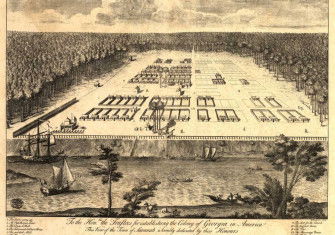Fractious Waters
The controversy over fracking finds echoes in 19th-century concerns over groundwater.
 Groundwater, the water located below the surface of the earth, usually within rock formations, is important in Britain as elsewhere. It supplies over half the drinking water in the densely populated lowland region of England. It is now in the spotlight because of the controversy surrounding ‘fracking’, the use of pressurised liquid to break rock in order to access gas. There are a range of problems associated with fracking: destabilisation of the geological substructure, the industrialisation of the landscape, through the drilling of numerous wells, and between these the potential for pollution of groundwater both by chemicals forced through the wells and the methane released from the rock. Yet the way in which groundwater came to be a vital resource to society was itself a controversial process and its history is instructive.
Groundwater, the water located below the surface of the earth, usually within rock formations, is important in Britain as elsewhere. It supplies over half the drinking water in the densely populated lowland region of England. It is now in the spotlight because of the controversy surrounding ‘fracking’, the use of pressurised liquid to break rock in order to access gas. There are a range of problems associated with fracking: destabilisation of the geological substructure, the industrialisation of the landscape, through the drilling of numerous wells, and between these the potential for pollution of groundwater both by chemicals forced through the wells and the methane released from the rock. Yet the way in which groundwater came to be a vital resource to society was itself a controversial process and its history is instructive.







![‘Scientific Researches! New Discoveries in Pneumaticks! [sic] or an Experimental Lecture on the Powers of Air, May 23, 1802’, by James Gillray. Minneapolis Institute of Art. Public Domain.](/sites/default/files/styles/teaser_list/public/2025-03/lecture_history_today_0.jpg?itok=mHN_obPV)